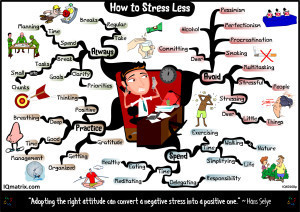Vered Neta's Blog, page 11
November 25, 2014
5 Secrets to Creating Money-Making Relationships
.
This weekend I’m giving one of our most successful course, Financial Freedom Intensive. When it comes to financial freedom what people usually miss is that the only way for you to get more money into your life is through… other people.
The question is – why would other people give you their hard earned money?
Only one answer – because you give them value!
In order for people to be willing to recognize that you deliver them value with your product or service – they need first to know you, then, like you and then, trust you.
For that to happen you need to create a relationship with them. It doesn’t matter whether it is your customer, supplier, employee or even your boss – you’ll need to create a relationship with them which in the end will be a money-making relationships.
I know, women tend to separate totally between relationships and money – but that is one of the biggest mistakes I’ve found that women tend to make.
So here are my top 5 secrets of creating Money-Making Relationships that might change your view point about money and relationships.
Relationships is about caring – Approach it as if it is just like any other
 relationship in your life that you want to turn into a friendship. You show your warmth, understanding, knowledge, and empathy. Be genuine. You should take an interest in everyone you meet, remember their names, and listen carefully to them. Try to understand their needs and determine how you could assist each other. Building trust is a vital component of relationship building. Be relaxed and stay interested.
relationship in your life that you want to turn into a friendship. You show your warmth, understanding, knowledge, and empathy. Be genuine. You should take an interest in everyone you meet, remember their names, and listen carefully to them. Try to understand their needs and determine how you could assist each other. Building trust is a vital component of relationship building. Be relaxed and stay interested.Develop active listening skills – Connecting is not about selling yourself, your
 products or services, or your business. It is about listening to the other person and showing them that you are truly interested in them. Allow others to open up and talk freely. Give them your undivided attention even if it is only for a few moments. Take an interest in what’s said and acknowledge this by nodding or agreeing. Use positive body language such as facing the person you are speaking to. And be sure to make eye contact! This means you are not reading a text message or looking over the other person’s shoulder to see who else is around.
products or services, or your business. It is about listening to the other person and showing them that you are truly interested in them. Allow others to open up and talk freely. Give them your undivided attention even if it is only for a few moments. Take an interest in what’s said and acknowledge this by nodding or agreeing. Use positive body language such as facing the person you are speaking to. And be sure to make eye contact! This means you are not reading a text message or looking over the other person’s shoulder to see who else is around.Give First - When you focus on helping others, the “getting” will follow.
 (And it will often come in unexpected ways!) Remember that no one likes a person with a “taker” mentality. When you are generous, people will notice and respect you. And people generally prefer to do business with people that they respect, trust, and like. Do simple things like acting as a host at every event you attend. One way to do this is by connecting others. This can be as simple as introducing two people to each other or as elaborate as giving a testimonial about a person and their services to the entire group. These acts allow you to focus on others while building equity among your peers.
(And it will often come in unexpected ways!) Remember that no one likes a person with a “taker” mentality. When you are generous, people will notice and respect you. And people generally prefer to do business with people that they respect, trust, and like. Do simple things like acting as a host at every event you attend. One way to do this is by connecting others. This can be as simple as introducing two people to each other or as elaborate as giving a testimonial about a person and their services to the entire group. These acts allow you to focus on others while building equity among your peers.Don’t sell – Connecting is not about trying to push your agenda. It’s about
 building relationships with people. Once you’ve made a connection, those people will likely be happy to tell others about who you are and what you do. Word of mouth and social proof are a thousand times more valuable than you talking about how great you are. At every opportunity, teach others about what you do and who you are as a person. Provide valuable, useful information. Always emphasize your mission and purpose. Doing these things is much more powerful than giving a new contact your elevator speech or sales pitch.
building relationships with people. Once you’ve made a connection, those people will likely be happy to tell others about who you are and what you do. Word of mouth and social proof are a thousand times more valuable than you talking about how great you are. At every opportunity, teach others about what you do and who you are as a person. Provide valuable, useful information. Always emphasize your mission and purpose. Doing these things is much more powerful than giving a new contact your elevator speech or sales pitch.Follow up with originality – Many people think that the same old email follow-up
 is okay. Well, it’s not. After the event, send a hand-written thank you card… a poem you wrote about the person you connected with… or a balloon bouquet. Mention something from your discussion in whatever communication you make. If you have truly made a connection, your follow-up will be easy and effortless. If you want more ideas how to follow-up check my blog post about it.
is okay. Well, it’s not. After the event, send a hand-written thank you card… a poem you wrote about the person you connected with… or a balloon bouquet. Mention something from your discussion in whatever communication you make. If you have truly made a connection, your follow-up will be easy and effortless. If you want more ideas how to follow-up check my blog post about it.By having a game plan, connecting with others can become second nature. People will see you as you are, not as a self-interested business focused on making sales.
Become the kind of person that others want to work with, and events can help explode your business.
Now is your time to give – What are your thoughts, tips and ideas – how to create a money-making relationship? Simply add them in the comment box below.
As a thank-you gift I will send you a video from my seminar of Mistakes Women Make with Money
If you find this article inspiring, please SHARE it on Facebook, LinkedIn or retweet it, by pushing the button on the left, for the right channel, so more women could benefit from it.
Please share this article with your:
- LinkedIn connections
and blog readers...
Have a magical week! Vered
November 18, 2014
30 Things You Must Know About Your Clients
 I always urge you to find out more about your clients – by using the simplest tool in the book – asking them.
I always urge you to find out more about your clients – by using the simplest tool in the book – asking them.
I don’t know how many of you actually went and did it, but if you did not, then you are missing the most important part of this blog – IMPLEMENTATION.
What’s the point of reading information if you are not going to use it???
Knowing more would not make your business grow.
Knowing more would not create for you a more balanced life.
You need to take the action and do something with what you’ve learned in order to see change.
So just in case you have not asked your clients, I want to share with you some of your clients’ hidden thoughts – the ones they will never share or admit – and yet – to really succeed – you better know them.
You might find some thoughts on this list cynical, but they’re not.
The truth is that each of us has some fears, insecurities and narcissism that tend to come up when we’re making a buying decision…
If you really knew your clients’ hidden thoughts and acted accordingly, you’d gain their trust, their love and you’d be able to better serve them.
Here are 30 hidden thoughts your clients won’t tell you:
 About you
About you
1. You don’t need to be a superwoman. Just deliver on what you promise me.
2. You don’t need to be perfect, but I need to know I can trust you.
3. I want to trust you, but I’ve been disappointed before – so it’s hard for me to trust anyone.
4. You’re always guilty until proven otherwise.
5. Telling me what you don’t know helps me trust you.
About your product/service
6. I don’t care about the facts and figures of your product. Tell me a story to make it exciting.
7. I don’t mind spending the money, as long as I’m getting real value.
8. I want you to do the hard work for me.
9. I don’t understand a lot of your communication. Can you make it clearer?
10. I don’t understand how to use your website, but I can’t admit that because it would make me feel stupid.
 About their life
About their life
11. My life is really stressful. If you can reduce that stress, you’ll become my best friend.
12. I spend lots of time being scared and worry. Please help me.
13. I’ll pay anything if you can help me not feel stupid.
14. My life is very complicated. Offer me a simple solution that I can implement without learning anything, and I’ll pay you extra.
15. I don’t know what I want most of the time. You need to figure it out for me.
About your relationship
16. I hate admitting when I was wrong, but I respect you when you do it.
17. If I criticize you, that means I care. Make it right and I’ll tell the whole world how great you are.
18. I want to tell you everything you need to know in order to sell to me, but I’m lazy. Make it easy enough and I will. Ask me and I’ll tell you
19. I want to buy your product, but I need you to help me justify it to myself or to my partner.
20. I don’t have any interest in your excuses. In fact, if I even notice them, they annoy me.
21. When I refer my friends and you treat them fantastically, that makes me look and feel smart. I love that.
22. I get jealous if I think you love another client more than you love me. I like to get little goodies no one else is getting. I like it when I feel like you’re talking just to me.
 About them
About them
23. I have the memory of a goldfish. Go too long without contacting me and I’ll simply forget you exist.
24. Money is not an issue when it comes to my obsessions.
25. I hate salespeople, but I really like to buy things.
26. I want things cheap (preferably free), but I don’t want to feel cheap.
27. I believe I deserve much more than I’m getting.
28. I rather take a pill to solve my problem than do all the real work required.
29. Despite all that, I secretly think I’m a better person than most people. Help me believe that and we’ll be friends forever.
30. It really is all about me.
Now that you know what your clients really think, how could you change or improve your product, your communication, your customer service or any other aspect of your business?
I’m curious to learn from you.
Please leave me in the comment box below – which of the items above created for you an ‘aha’ moment, and what changes would you make in your business to address these insights…
Please share this article with your:
- LinkedIn connections
and blog readers...
Have a magical week! Vered
November 11, 2014
Listening From The Heart
 Those that have been to our live events know that our main dream and vision is to change the education system in the world to a one that would be empowering children to fulfill their potential and not of one that is focused on teaching them facts and figures.
Those that have been to our live events know that our main dream and vision is to change the education system in the world to a one that would be empowering children to fulfill their potential and not of one that is focused on teaching them facts and figures.
One of my favorite movies on a teacher that I would love to have in this type of school is the one for the movie Freedom Writers. The teacher in the movie demonstrates one of the most important qualities that every leader should have and it is – Listening.
In the movie the teacher, Hilary Swank, realizes that she has no clue about her students’ world and, therefore, instead of teaching by speaking to them and coming from the all knowing position of authority, she realizes that if she wants to help those kids to learn and grow she will need to do it in a different way than the “old school methods”.
She realize, she needs, first of all, to listen not only to the words they are saying but also to what they are NOTsaying and most of all to what is in their heart.
In the old way of schooling a teacher’s job was to educate the kids. This meant that the teacher knowledge was more significant and much more valuable than what the child had. That meant that all the teacher had to do, was to speak and the child had to listen and do what is told. This is the command and control way, which is the old way.
 In the movie we see how she realizes that there is no way those kids will ever truly listen to her and that instead she needs to listen to them. Listen from her heart not from her head. Only once she was willing to truly listen to what they had to tell her could she find a way to create trust with them, which allowed her to teach them.
In the movie we see how she realizes that there is no way those kids will ever truly listen to her and that instead she needs to listen to them. Listen from her heart not from her head. Only once she was willing to truly listen to what they had to tell her could she find a way to create trust with them, which allowed her to teach them.
Truly listening to another person demands a lot of courage, as you will need to let go of your ideas about the subject and the topic. It demands attention, care and most of all respect to the other. All those qualities come together when you listen.
Usually when people think about great communicators they think about people who could speak eloquently, persuasively and with confidence and intelligence. All this is true but it is only a limiting way of looking at communication. It is a one-way street.
 When it comes to human relationships the most important part of communication is listening. That would be the Feminine Leadership way of communicating. Maybe that’s why we have one mouth and two ears so we can listen better, which proves that the important part in the communication is listening.
When it comes to human relationships the most important part of communication is listening. That would be the Feminine Leadership way of communicating. Maybe that’s why we have one mouth and two ears so we can listen better, which proves that the important part in the communication is listening.
Teachers are not, usually, great listeners. They are too busy and self important in trying to get across their message and deliver the material they need to teach to actually remember that at the end of the day the most important person is not them, but the child.
What the teacher, in this movie, did by listening to the kids was to change her concept about what is her job as a teacher from educating them to guiding them how they can fulfill their potential. By listening to them she found a way where they started believing in themselves, started regaining faith in human spirit, and most of all, they trusted themselves and to see how amazingly special each one of them is.
 My favorite scene in the movie is when she brings them to realize that although they think they are different than one another, that although they feel that they are the only ones that suffered and paid price, they are basically all the same under all the exterior of the outside and the fact they look different or speak different languages they are still all connected.
My favorite scene in the movie is when she brings them to realize that although they think they are different than one another, that although they feel that they are the only ones that suffered and paid price, they are basically all the same under all the exterior of the outside and the fact they look different or speak different languages they are still all connected.
In order for this to take place she draws a line on the floor and each time she asks a question those that can relate to it need to stand on the line. This creates a meeting point for them, but it demands them to listen. Each time they meet on the line they communicate to each other – we share the same experience. This demanded from them – listening. The result was a life changing moment for those kids.
This could not have been achieved if she would have spoken logically and rational from her head. This could only be achieved because they were willing to listen and share from their hearts.
They say that a picture is worth a thousand words. Listening from your heart can save you those thousands words!
Now I’m curious….
How do you make sure you are listening ?
Share with us in, the comment box below, your tips for better listening skills?
If you find this article inspiring, please SHARE it on Facebook, LinkedIn or retweet it, by pushing the button on the left, for the right channel, so more women could benefit from it.
Please share this article with your:
- LinkedIn connections
and blog readers...
Have a magical week! Vered
November 4, 2014
All You Need is Love… Really????
 Are you part of this trend that says that all you need to do is “do what you love” and the money will follow?
Are you part of this trend that says that all you need to do is “do what you love” and the money will follow?
Research shows that the young generation is totally focused on doing ONLY what they love. Endless research proves that in order to motivate the young generation the incentives need to be different than just a higher paycheck or security.
People are looking for projects that would ignite their passions and that would allow them to do what they love.
Ever since I remember myself I used to say that I don’t care how much you pay me, as long as I’m doing what I love the money is not really important for me. The result was… I was broke!
Well, maybe not broke, I was working 2 or 3 jobs at the same time, but I lived on bare necessities.
 As I grew up I adopted a slightly more modern version of it, which was… if you do what you love – the money will follow.
As I grew up I adopted a slightly more modern version of it, which was… if you do what you love – the money will follow.
When I was writing my book “Financial Independence for Women” I found out that many women buy this myth. Like any myth – the fact that lots of people believe it and repeat it – doesn’t make it true. At least not the whole truth.
I believe that doing what you love (or better yet – what you’re passionate about) is only one third of the key to your business success.
The secret to success is finding the balance point between three elements. Your natural talents, your passions and what you have to give to the world.
 When you find this balance point, you play to your strengths.
When you find this balance point, you play to your strengths.
Your talent is what comes easy to you therefore your work becomes play (because you love it).
The end result is that money will flow in because your bank account is always a reflection of how much value you deliver to the market place.
To find this balance point – which is the key to your business success, you have to ask yourself 3 questions.
For each question make a list of answers, and then look for one answer (or more) that appears on all 3 lists.
And the questions are…
What comes easy to you, but harder to others?
What would you love doing even if you’ll never get paid for?
How can you be of service and how can you contribute to the world?
 My answers (in short) would look like:
My answers (in short) would look like:
Communicating, sharing my knowledge, creating relationships, parenting, energizing, dancing, singing and performing, challenging people and concepts, trying new things…
Sharing my knowledge, singing and performing, reading to children, diving…
Empowering others, sharing my knowledge, philanthropy, writing books, working with children and educators…
It took me a minute to come up with these 3 lists, and it’s pretty clear that ‘sharing my knowledge’ appear in all 3 lists.
When I look back at my life it all makes sense. I started teaching when I was 18 and never stopped.
I shared my knowledge with kids, teenagers and grownups, with the challenged and the gifted, the unemployed and the super rich, on more topics than I can remember…
I’ve created new concepts of education both in the main stream and out of the main stream of education
I’m good at it, I love it, and I believe I delivered a lot of value to the world through the years… And finding that balance point was the key to my success.
I’m curious to hear from you…
What would be your balance point?
Share with us in, the comment box below, your answers to the 3 questions and others might help you in find that balance point ?
As a thank-you gift I will send you a video about Looking at Money as Positive Force from the course “Mistakes Women Make with Money”
If you find this article inspiring, please SHARE it on Facebook, LinkedIn or retweet it, by pushing the button on the left, for the right channel, so more women could benefit from it.
Please share this article with your:
- LinkedIn connections
and blog readers...
Have a magical week! Vered
October 28, 2014
Who’s Afraid of Business Budgeting?
 The answer to the above was for many years, me.
The answer to the above was for many years, me.
If you read my book “Financial Independence for Women”, you know that anything that had to do with money, budget or any type of numbers would scare the hell out of me.
I always used to feel small, stupid and insignificant when it came to money management, business budgeting or any of the stuff that had to do with money.
Can you recognize this pattern?
It’s like you know it is important, you know that if you want to have a successful business you MUST put attention on that side of business, but each time when you look at financial reports, cash flow charts it feels as if you’re reading a strange language. You can read the numbers, but have no clue what it means.
This was true for me too, until one day I decided, “enough is enough”. I realized that I don’t need to depend on someone’s else “language” I can create my own language, which would make sense to me and would help me navigate my business in the right direction.
I decided to create my own rules and tips that would help me run my business with more ease and efficiency.
Here are my top 10 tips of business budgeting
 1) Maintain clear, accurate records. Business budgeting can only be done when transactions have been recorded properly. Keep your books clear, up to date, and in one place. This won’t just help your budget—it will make things easier for you at tax time as well.
1) Maintain clear, accurate records. Business budgeting can only be done when transactions have been recorded properly. Keep your books clear, up to date, and in one place. This won’t just help your budget—it will make things easier for you at tax time as well.
2) Start with the overall view. Whether you are budgeting for the day-to-day operating of the business or a large project which in the works, begin with the big picture. Set goals and map out the route to get the job done.
3) Define certain areas of the business. Budgeting is not always about how much things will cost you. You can plan for revenue goals and then focus on the costs of goods sold before budgeting for overhead expenses. Spend time concentrating on each area, and focus on minimizing costs to increase your profits.
4) Work with percentages as well as euro figures. Meaning, sometimes its better to set the goals in how much percentage you want to earn, or cut costs in, then what would be the total revenue or profit. Maintain a budget (on computer or paper) that details both of these things. This will help you to maintain the structure of your budget when the figures vary.
 5) Be realistic. I’m known to say, “ Dare to Dream and dream big”. However, if you sold 20 custom dollhouses last year and you wish to sell 2,000 this year, you will need to change your whole business model to reach that goal.
5) Be realistic. I’m known to say, “ Dare to Dream and dream big”. However, if you sold 20 custom dollhouses last year and you wish to sell 2,000 this year, you will need to change your whole business model to reach that goal.
No point in setting a hugely higher goals unless you change your whole business model. That’s the reason I’m saying be realistic. Budgets are only useful tools if the goals and estimations are realistic. By all means forecast and be motivated for growth, but if you didn’t figure out the way to reach those goals don’t set them in the first place, as you are setting yourself for failure.
6) Sharpen and refine your budget constantly. Business budgeting is fluid, and most businesses will have to update or sharpen their budgets monthly at a minimum. Some may need to do so weekly. Find out what you have time for and what works best for your business, but stay on top of it.
7) Compare budget figures to actuals on a regular basis. When you are at the sharpening stage, be sure to line up the budgets and actuals from the previous period. This will keep you informed and grounded, and allow you to work with actual figures, not estimates.
8) Share your budgets with the appropriate people. Whether that is your bankers, investors or accountant, presenting a budget shows forethought and planning. Keep copies handy for when they are needed. Business budgeting is a part of any good business plan as well, so set aside some time to create your budget if you are working on your plan.
9) Maintain a database of past budgets. When the new fiscal year rolls around, don’t delete the old budget. Use it to help create accurate forecasts, to compare growth over time and as general information on your money management. Keep all of your past budgets together in one place, file or software so that access is simple.
10) Obtain help where necessary. Educate yourself through courses or books, ask for professional advice from your accountant/bookkeeper or work with a trusted mentor to develop your budget. Learning this useful tool will be beneficial to your business in the long term. Although the task may seem difficult to some, your day to day routine will run more smoothly when you follow these business budgeting tips.
Now I’m curious…
How do you take control over your business financials?
Share with us in, the comment box below, your tips, experience and ideas of how to keep track on your financials?
As a thank-you gift I will send you a video about Know Your Numbers from the course “Women Do Business Differently”
If you find this article inspiring, please SHARE it on Facebook, LinkedIn or retweet it, by pushing the button on the left, for the right channel, so more women could benefit from it.
Please share this article with your:
- LinkedIn connections
and blog readers...
Have a magical week! Vered
October 21, 2014
Tips for Following Through
 Do you know what is the number one reason why people are not as successful as they could be?
Do you know what is the number one reason why people are not as successful as they could be?
It’s called – not following through….
Nothing you will do in your marketing will be successful if you don’t have a proper follow-up system.
Most women fail by thinking, that the old high-school system of keeping in touch, meaning, remembering to phone or send an email to remind prospects about previous phone call, or latest product/service will be qualified as an effective follow-up system.
A balanced follow-up program needs to be a SYSTEM, not just based on whether you remember to do things. It has to be planned and thought throughly. It should combine both phone and mail with a variety of information, which will give you a good starting point for each time you connect with your prospective clients.
I’m familiar with the usual “mantra” of many businesswomen who say to me – “why should I follow them up? If they want me they got my details and they know my service/product is great – when they want it they will contact me”.
 If this is your mantra then you probably live in only one country in the world that this will make you a successful businesswomen – it’s called “La-La Land”.
If this is your mantra then you probably live in only one country in the world that this will make you a successful businesswomen – it’s called “La-La Land”.
On the other hand, there are those businesswomen that think that calling and sending emails constantly about how great their service/product is, will create more clients for them.
This also will only work in that far away country called “La-La Land”
The key to creating a great Follow-Up system starts by understanding what is the purpose of a Follow-Up system.
The purpose is to complete the cycle of trust with your prospects. That means that it should be able to move them from knowing about you, liking what you have to offer and trusting you.
Only when they trust you that you truly CARE about them will they be willing to become your client. Only when they see that you know who THEY are, that you understand what THEIR needs are will they trust you that you can help them with THEIR challenges.
Here are 4 Fabulous Follow-Up Tips That Work
Tip 1: Have a SYSTEM
I’m all about having systems, but trust me; you don’t need to have a Customer Relationship Management System (CRM).
I know that some of the experts will tell you that you MUST have one, but, unless you have more than 5,000 prospects to follow-up each month you have no need for it, so don’t throw your money on finding one.
 The old Excel spreadsheet will be sufficient enough for what you need.
The old Excel spreadsheet will be sufficient enough for what you need.
Put together a spreadsheet to track all of your warm prospects. On this spreadsheet, have the following headings as a minimum:
1. Name,
2. email and phone (preferable mobile phone),
3. business,
4. referral source
5. And status update.
In today’s world most of the time you will not really need their physical address, but if you are sending samplers or physical goods make sure you have their physical address.
Keep a note of what you both spoke about; include not only the business you were discussing but anything they may have told you about themselves personally as well.
By gathering this useful information now, you will be able in the future to tailor your follow up specifically for this individual. Remember to keep this list up to date!
 Tip 2: Set a time to follow through
Tip 2: Set a time to follow through
Make a note in your diary to follow up any warm prospect within 48 hours to maximum 10 days after your first contact.
I know most textbooks say 90 days – trust me after 90 days no one is going to remember you…
When the follow-up day comes, make sure you actually do follow up, then and there.
Don’t procrastinate!
Tip 3: Do NOT sell when following through
Follow up with these warm prospects. Make sure you are not “selling” anything on those follow-ups.
It can be as simple as “I’m just checking in to see how you are” call or email.
I’ll be honest with you – I’m not comfortable with a push sell, but I am comfortable following up with warm contacts to see how they are doing, updating them on what I‘m doing, and generally learning more about them.
One way I like to break up the phone calls is to send out useful information to these prospects.
After I have learnt more about what is happening in their business, if I see something that I think they may find interesting I will send it off to them. Whether it will be an article, or a link or even just an interesting show or movie I will forward it to them. If there is a specific holiday, that I would like to recognize, then I may send off a card as well.
 This approach mixes things up a bit, takes the pressure off constant phone calls, and is seen as a more personal approach, rather than just contacting them by mail (whether that be conventional post or email).
This approach mixes things up a bit, takes the pressure off constant phone calls, and is seen as a more personal approach, rather than just contacting them by mail (whether that be conventional post or email).
You’ll also find they will be surprised or delighted that you remembered something about them that wasn’t in relation to closing the sale.
Tip 4: NEVER give up on a prospect
Keep following up within every 30-45 days until your lead becomes a client, don’t take them off your follow up system if they didn’t say no. It may take time for a conversion to happen; in fact it may even take longer than a year.
Now, the only times you want to take prospects off your follow up system is if the NO becomes a definite NO, or you decide that this person is not your ideal client.
Remember at the end of the day, you can choose the clients you want to work with.
Now I’m curious…
What is your SYSTEM for following up on your prospects and clients?
Share with us in, the comment box below, your tips, experience and ideas of how follow up on prospects and clients ?
As a thank-you gift I will send you a video about Defining Your Target Audience from the course “Women Do Business Differently”
If you find this article inspiring, please SHARE it on Facebook, LinkedIn or retweet it, by pushing the button on the left, for the right channel, so more women could benefit from it.
Please share this article with your:
- LinkedIn connections
and blog readers...
Have a magical week! Vered
October 14, 2014
Tips for Stress Management
 I don’t know about you, but for me, this year is moving so fast, the end of the year is already around the corner. My stress levels are rising each time I think about how much more needs to be done in order to reach my goals and dreams for this year.
I don’t know about you, but for me, this year is moving so fast, the end of the year is already around the corner. My stress levels are rising each time I think about how much more needs to be done in order to reach my goals and dreams for this year.
Does that sound familiar to you?
If you are in business more than a year, you probably know what I’m talking about. Those last 3 months of the year tend to be the most productive months, but at the same time the most stressed and busy ones.
You probably know by now, that stress is not helping you in performing at your best. It’s not good for your business life, personal life and definitely not for you health
The question you need to ask yourself is – how do I reduce my stress in tensed periods?
When unavoidable circumstances and demands pile on you, don’t get exhausted! Follow these great stress-reducing tips to regain your control and get on with your day:
 1) Recognize the root or true source of your stress. Strip away the obvious and look deeper to try and discover the driving force behind your sense of anxiety and nervousness. Focusing on what the real problems are will lead you to a solution.
1) Recognize the root or true source of your stress. Strip away the obvious and look deeper to try and discover the driving force behind your sense of anxiety and nervousness. Focusing on what the real problems are will lead you to a solution.
One of the best stress reducing tips is to figure out what is bothering you and face it head on. Procrastination will just make things worse, and increase your anxiety.
2) Practice prevention if possible. If certain situations or people cause you to have stress, decide whether or not you can avoid them, or eliminate them from your life entirely.
If rush hour creates stress for you– try going to work in different hours. If you have a client that constantly creates stress for you consider letting that client go. If a supplier is frequently late on his delivery find a replacement for him or her.
3) Recognize what you can handle and don’t go beyond that. Practice saying “no” to whatever is beyond your threshold or capabilities. Don’t worry about disappointing or displeasing people. When you are overloaded you will not perform well and eventually disappoint someone. Better to politely decline before getting to that point.
 4) Learn how to manage your schedule. Use a day-timer, keep your goals realistic, and delegate where necessary. Some of the best stress reducing tips are also great time management tips! Once you write things down, you won’t have to keep going over them in your head, or be afraid of forgetting them.
4) Learn how to manage your schedule. Use a day-timer, keep your goals realistic, and delegate where necessary. Some of the best stress reducing tips are also great time management tips! Once you write things down, you won’t have to keep going over them in your head, or be afraid of forgetting them.
5) Communicate well. Stress can grow when it is held inside or dealt with quietly. Talking about your opinions, feelings and viewpoints will allow you a sense of control in stressful situations.
You don’t have to discuss your problems with someone in your business. A mentor or trusted advisor can listen, offer stress-reducing tips and help you come up with some commonsense solutions.
6) Expect to negotiate. The client may not be right in some situations, but if you will be willing to consider different ways to resolve the issue you can avoid stressful situation.
7) Think long term. One stress reducing strategy is to ask yourself if the issue will matter tomorrow, next week, or next year. Broadening your perspective may allow you to let things go that have no lasting effect in the future. Remember – don’t sweat the small stuff!
8) Be positive. Look for the “silver lining” in situations and turn a problem on its head. Failures can be hidden opportunities and pressures might be motivations for change. Be grateful and creative when approaching problems.
9) Be healthy at work and outside of work. Eat well, exercise and have fun. Dealing with stressful situations will be easier with a healthy body and mind.
 10) Get away from work occasionally. Everything looks larger when you are up close, so back away and get the true picture. Even if the show won’t run without you, allow yourself set times to put work aside. Your productivity will be better when you return relaxed.
10) Get away from work occasionally. Everything looks larger when you are up close, so back away and get the true picture. Even if the show won’t run without you, allow yourself set times to put work aside. Your productivity will be better when you return relaxed.
Business will always have it’s stress moments. The trick is to find a way to face the stress and keep on going. Use these stress reducing tips to tackle problems head on and handle all facets of your business well.
Now I’m curious…
How do you handle your stress moments in business?
Share with us in, the comment box below, your tips, experience and ideas of how to manage stress in business ?
As a thank-you gift I will send you a video on one of my favorite ways to reduce stress from the series “52 Ways for Balanced Life”
If you find this article inspiring, please SHARE it on Facebook, LinkedIn or retweet it, by pushing the button on the left, for the right channel, so more women could benefit from it.
Please share this article with your:
- LinkedIn connections
and blog readers...
Have a magical week! Vered
October 7, 2014
Clients From Hell and How to Deal with Them
 When it comes to clients I always advice to choose working with what I call “Ideal Clients”.
When it comes to clients I always advice to choose working with what I call “Ideal Clients”.
But no matter how hard you will try to select only those that would be your Ideal Clients, you would probably have some that would turn out to be what I call “Flops”.
Those are those clients that always complain, those that nothing is good for them, those that demand that you go all the way, while they don’t stand up for their part of the agreement.
You know what I’m talking about? So the question is always how can you deal with difficult clients?
Because the truth is that if you will be able to turn one of those clients into a satisfied client you’ll have the best testimonial and advocator you could ever imagine.
So here are 10 ways to deal with those difficult clients:
 1) Listen to your client. Really and truly hear what they have to say and filter it through your own viewpoint. Ask them to explain anything you don’t understand. If there is a language barrier, enlist help to get the problem spelled out. “I don’t like this sweater” can mean many things – it doesn’t fit, the color isn’t right, it has a hole in it, it is made from a scratchy fiber, etc. By listening, you can discover what the underlying concern is, and address it correctly.
1) Listen to your client. Really and truly hear what they have to say and filter it through your own viewpoint. Ask them to explain anything you don’t understand. If there is a language barrier, enlist help to get the problem spelled out. “I don’t like this sweater” can mean many things – it doesn’t fit, the color isn’t right, it has a hole in it, it is made from a scratchy fiber, etc. By listening, you can discover what the underlying concern is, and address it correctly.
2) Take a look at things from their perspective. Maybe they have had a terrible day or are dealing with life issues. It could be that they have a genuine problem with the way you have handled their project. Trying to see their side of the story may give you some insight, and help you deal with difficult clients.
3) Be honest and clear. If the client is bullying you, don’t back down from a correct position, but stand your ground in a cool and polite way. But make sure that you are in the right or have stated the truth.
 4) Try not to take it personally, even if it is personal. Most times the difficulties that clients have are not about you. It might be that you are just triggering for them something from their own past. It has NOTHING to do with YOU. Maintain your distance, and let them have issue with the business, not you personally. In time, their attitude will be a distant memory.
4) Try not to take it personally, even if it is personal. Most times the difficulties that clients have are not about you. It might be that you are just triggering for them something from their own past. It has NOTHING to do with YOU. Maintain your distance, and let them have issue with the business, not you personally. In time, their attitude will be a distant memory.
5) Own up to mistakes, even if it hurts. If you realize that mistakes have taken place make sure to find ways to correct them, even if you were not the one that made the mistake. This will solve the situation quicker than you think when you deal with difficult clients.
6) Get to the real problem. Forget the small complaints and search out the root of their difficulty. Dealing with the real stuff will be more efficient than trying to put out plenty of unimportant and insignificant issues.
7) Avoid confrontation whenever possible. Even if the client is completely in the wrong, your business will suffer from a confrontation. People will witness it or it will be recorded (such as in emails). Your employees, suppliers and potential clients may lose respect for you. The satisfaction of a battle of words will not be worth it in the end when you deal with difficult clients.
8) Keep accurate records of the transaction. If the client is difficult from the beginning, keeping records is a smart idea. Creating backup to counter their negative claims and keeping yourself accountable are all results of recording the transaction.
 9) Ask them – “what do you suggest?”. Best way to disarm an angry client is by asking them “What do you suggest?” or “How can I solve it for you?” This does not mean that you need to agree to everything they suggest, it just shows that you are listening to them and looking for a solution. Be prepared with your solution and offer them something reasonable first. Be prepared to negotiate. But offering the olive branch first is a good position to be in.
9) Ask them – “what do you suggest?”. Best way to disarm an angry client is by asking them “What do you suggest?” or “How can I solve it for you?” This does not mean that you need to agree to everything they suggest, it just shows that you are listening to them and looking for a solution. Be prepared with your solution and offer them something reasonable first. Be prepared to negotiate. But offering the olive branch first is a good position to be in.
10) Know when to give up. Some people simply can’t be satisfied—either they crave attention or love conflict. Make sure that you have resolved what you can before you end the business relationship, but move on when you need to. It may be that you need to cut ties before the project is completed. If that’s the case, do as much damage control as you can and carry on.
Inevitably you will encounter and have to deal with difficult clients. Using these steps could turn them to your best supporter.
Now I’m curious…
What ways have you found to deal with difficult clients?
Share with us in, the comment box below, your tips, experience and ideas of how to deal with difficult clients ?
If you find this article inspiring, please SHARE it on Facebook, LinkedIn or retweet it, by pushing the button on the left, for the right channel, so more women could benefit from it.
Please share this article with your:
- LinkedIn connections
and blog readers...
Have a magical week! Vered
September 30, 2014
10 Ways to Boost your Energy Levels
 You know how you always teach what you need most?
You know how you always teach what you need most?
Two weeks ago I was giving a whole weekend about Excellent Health and teaching all types of ways and techniques to keep your body to support you in achieving your dreams and goals.
This week I suddenly realized that the person that needed this material most was… ME.
I took a day off and wrote down new commitments to myself for things I can on a daily basis to boost my energy levels and take care of myself.
You see, I believe, everyone needs a break now and then, especially when you are a small business owner.
Make sure you set aside some time each day for yourself, and try out these great ideas—each is designed to boost your energy levels, and help you find focus. Even when you can’t leave the office, you’ll feel refreshed and revitalized, and ready to bring fresh new energy to work.
 1) Have a set time to come to the office and/or a set time to leave. Giving yourself this limit will help you to organize and actually do things outside of work. We know there is always more work to be done. Leaving it until tomorrow will not usually hurt.
1) Have a set time to come to the office and/or a set time to leave. Giving yourself this limit will help you to organize and actually do things outside of work. We know there is always more work to be done. Leaving it until tomorrow will not usually hurt.
2) Take a walk. The simple act of getting outdoors can have you feeling refreshed and rejuvenated, even if you can only walk for thirty minutes. It can be just as refreshing as a vacation but you still get a full days work done.
3) Get plenty of exercise. Take the stairs, walk to your coworker’s desk instead if using the intercom or IM. Do what you can to keep moving during the day and you will handle the stress of the day, and feel more focused on your work. Exercise doesn’t make you tired—it jump starts your metabolism, and really works to boost your energy levels.
 4) Have a time of “no access.” Having constant contact with your office may be helpful for getting stuff done, but it doesn’t do much for you. If you know that your smart phone will be off at certain times, it will allow you to truly let go – even if only for a short time.
4) Have a time of “no access.” Having constant contact with your office may be helpful for getting stuff done, but it doesn’t do much for you. If you know that your smart phone will be off at certain times, it will allow you to truly let go – even if only for a short time.
5) Be sure to set up solid systems. Having good plans and excellent staff will ensure that the business will run well when you’re not watching. Be clear with your communications and learn to delegate and trust people. You will feel a boost in your energy levels when you don’t have to micromanage your staff.
6) Take a weekend, even during the week. Some businesses run full tilt seven days a week and don’t leave time for a weekend. Set your workweek up so that you have at least one full day away from the office.
In Open Circles Academy our trainings are always in the weekends. So, for years, Nisandeh and I used to define our weekend on Wednesday & Thursday
7) Plan social times with your employees. Short, friendly lunch breaks, office celebrations and even informal coffee breaks can allow you some breathing space in the workday. If you spend most of your time at work, you might as well have some social interaction with the others who are there.
 8) Learn to recognize when you need a break. Listen to your body. When things start to stretch too far or break down, you need to catch it fast. Early warning signs are shortened temper, inability to concentrate and below par work. Ignoring these signs can really put a damper on your performance.
8) Learn to recognize when you need a break. Listen to your body. When things start to stretch too far or break down, you need to catch it fast. Early warning signs are shortened temper, inability to concentrate and below par work. Ignoring these signs can really put a damper on your performance.
9) Spend time with your family and friends regularly. This may seem obvious, but make it a priority. Don’t forget to take time, even small bits of it, to just be yourself instead of the face of your business. Boost your energy levels and revitalize yourself by focusing on the people who are most important to you.
10) Let yourself truly be away when you do actually get away. Learn to leave the office quickly and thoroughly, so that even if you get away for one day it will be an effective use of scarce vacation time.
Getting away will help you to be a better business owner, but it’s not always possible. Look for simple, small ways to boost your energy levels each day and you will get the most out of the time you spend on your business.
Now I’m curious…
What ways have you found to get your energy up?
Share with us in, the comment box below, your tips, experience and ideas of how to energize yourself ?
If you find this article inspiring, please SHARE it on Facebook, LinkedIn or retweet it, by pushing the button on the left, for the right channel, so more women could benefit from it.
Please share this article with your:
- LinkedIn connections
and blog readers...
Have a magical week! Vered
September 23, 2014
10 Steps in Bringing Old Clients Back
 At some point or another, all businesses lose a client, and so all businesses need to know how to bring back clients that stopped buying. It may take a little bit of hard work, but winning back an old client will be worth it in the end.
At some point or another, all businesses lose a client, and so all businesses need to know how to bring back clients that stopped buying. It may take a little bit of hard work, but winning back an old client will be worth it in the end.
1) Review the project or sale. Find out from your end exactly if anything went wrong—and if it did, take the necessary steps to ensure it won’t happen again.
2) Contact the client with gentleness and respect. Don’t be overly aggressive, or make assumptions about your customer’s feelings or point of view. Try to feel them out to see why they left. The reason could be simple—they could have relocated, cut their budget, or had a genuine problem with your product or service.
 3) If there was a problem, find out what went wrong from their perspective. Maybe they have implicitly laid this out for you in the past, but go over it with them again. Understand where they are coming from. Give them your attention for as long as it takes to fully describe the problem. You can’t expect to bring back clients that stopped buying if you don’t know why they left.
3) If there was a problem, find out what went wrong from their perspective. Maybe they have implicitly laid this out for you in the past, but go over it with them again. Understand where they are coming from. Give them your attention for as long as it takes to fully describe the problem. You can’t expect to bring back clients that stopped buying if you don’t know why they left.
4) Get them up to speed. Inform them of the changes you made in step 1 and assure them that any additional changes will also be made promptly. Don’t promise what you can’t deliver though, or you risk ruining the relationship completely. If you have many small customers, public announcements or mailings make work for this step; otherwise make it a face to face meeting.
5) Offer an incentive. Most consumers can’t resist a deal. Give them something to tempt them back into your fold. One of the best ways to bring back clients that stopped buying is to give them an irresistible reason to come back. Think of it as an investment in the future of your business.
 6) Open up lines of communication for the duration of the project. Give the client your direct cell number or a few different ways to reach you. That way they will be assured that you are available to handle any further difficulties. Personal service and attention is a great way to bring back clients that stopped buying.
6) Open up lines of communication for the duration of the project. Give the client your direct cell number or a few different ways to reach you. That way they will be assured that you are available to handle any further difficulties. Personal service and attention is a great way to bring back clients that stopped buying.
7) Consider milestones or review periods. If it works for your type of business, set up periodic reviews of the project beforehand. This will let the client know that both of you will be keeping tabs on the job all the way through.
8) Resell your business to them. In may seem repetitive, but go over all of the reasons they should buy from you again. Remind them of what you can deliver. Use positive references if possible.
9) Offer them an out. Different than the incentives you can give them, this works more like a guarantee. Make the project as risk free an option as possible for them. If they have little to lose in trying you again, they are more likely to do so.
 10) Ensure that your business will deliver with no further issues. Strengthen the backbone of your business. Double check that everything related to the project will happen well and on time. Follow through with all promises you’ve made, and follow up when the project is complete.
10) Ensure that your business will deliver with no further issues. Strengthen the backbone of your business. Double check that everything related to the project will happen well and on time. Follow through with all promises you’ve made, and follow up when the project is complete.
Trying to bring back clients that stopped buying can be a difficult proposition for your business. But the process and the end result are beneficial, and a satisfied customer is the best advertising you can get.
Now I’m curious…
What ways have you found work best to bring back old clients?
Share with us in, the comment box below, your tips, experience and ideas of how to bring back clients ?
If you find this article inspiring, please SHARE it on Facebook, LinkedIn or retweet it, by pushing the button on the left, for the right channel, so more women could benefit from it.
Please share this article with your:
- LinkedIn connections
and blog readers...
Have a magical week! Vered



